Continue reading for our analysis...
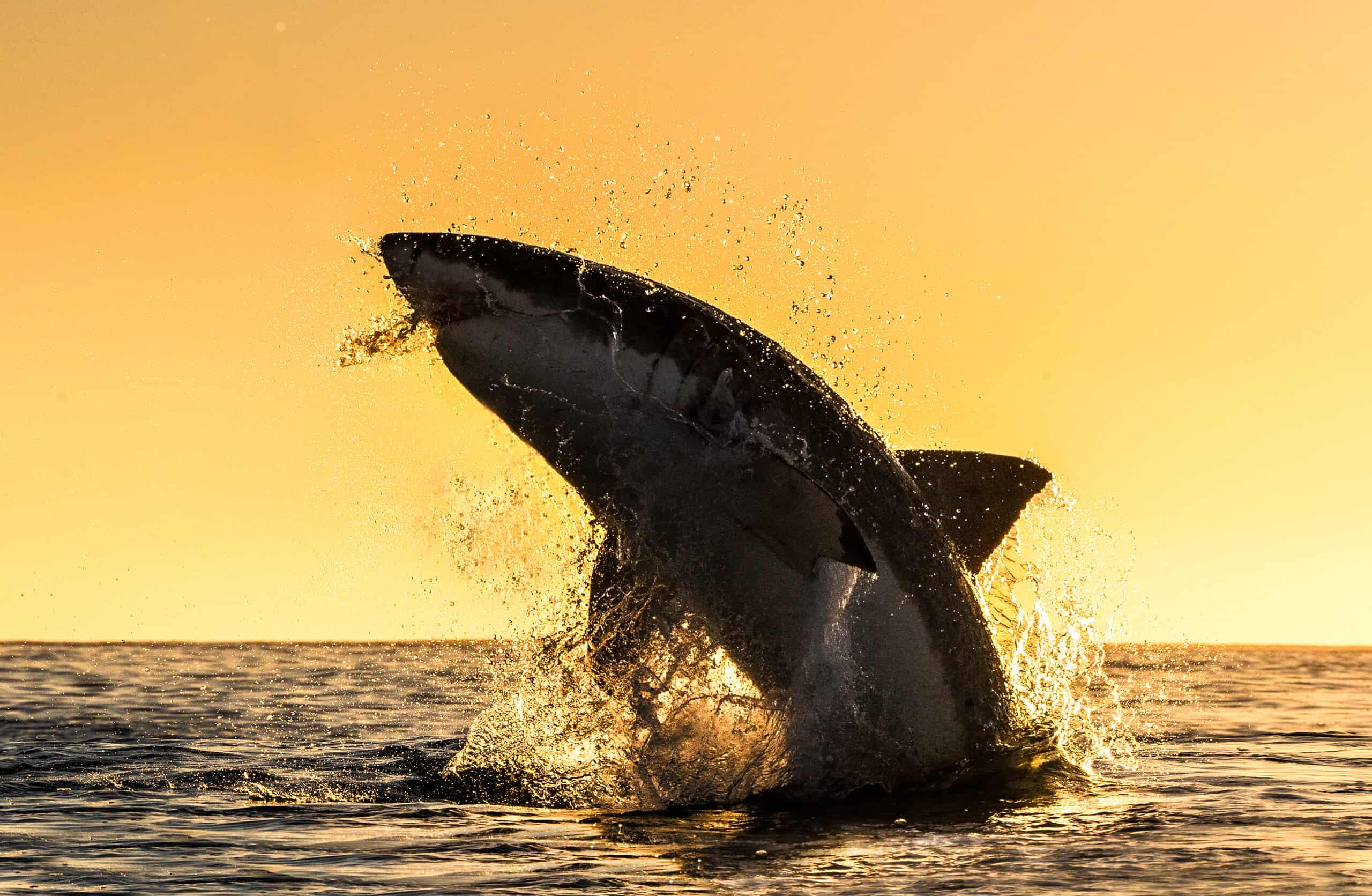
The great white shark is one of the animals that causes people the most fear. Attacks by great white sharks on people are actually quite uncommon, and it is even more unusual for one of these encounters to be fatal. Yet, the great white shark’s size and effectiveness as a predator contribute to the enduring of this unfounded fear.
While hunting, the great white shark launches itself out of the water, which is difficult to conceive for an animal weighing 2000 pounds. Great white sharks engage in a spectacular action known as breaching in order to capture seals and other fast-moving prey.
Sharks are capable of flying 10 feet into the air while swimming at speeds of up to 40 mph. However, breaching is extremely uncommon because it takes so much energy for the shark to move. Once they have located a victim, they use a quick burst of velocity to hit and bite their prey.
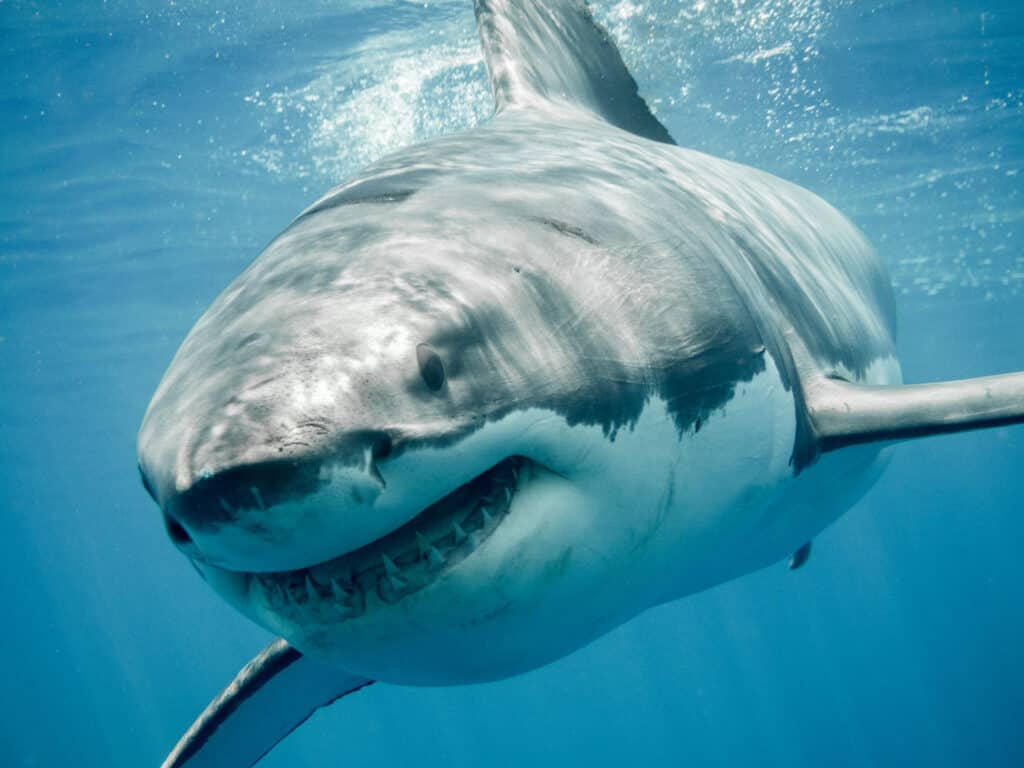
great white shark
©Ramon Carretero/Shutterstock.com
According to experts, during the past 18 years, the success rate of a breach has been around 47%, down somewhat from 51% over the previous five years. The chase will begin if the seal is able to escape the shark’s jaws. Let’s just say, you don’t want to be on the receiving end of a breaching shark!
Great whites hunt by taking advantage of their speed and pigmentation. They swim underneath and hunt for prey at the ocean’s surface. The number of teeth in these top animals’ several rows can reach thousands. The teeth in the row behind them quickly take their place when they fall out.
These fangs are deadly with their sharp, serrated edges. Large, individual bites can be lethal.
A Close Encounter
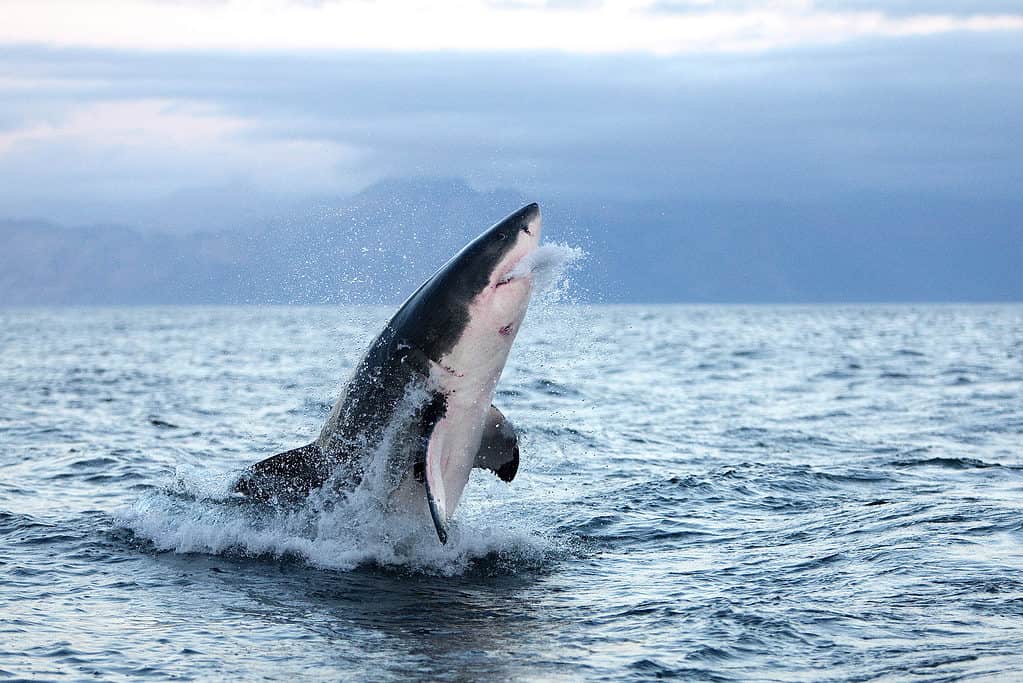
Great white sharks breach water to remove parasites or to catch prey.
©slowmotiongli/Shutterstock.com
As tourists explore the water on a boat in South Africa, they witness a jaw-dropping encounter. The water is calm and a beautiful shade of turquoise as the guests relax on the boat. Little did they know, a great white shark was lurking just beneath the surface.
Without warning, it bursts out of the water, breaching the surface and leaving everyone watching in awe. A video of the interaction has several comments, one of which reads, “What is scary is that you don’t see it until it’s broken the water. Amazing creatures.” It’s true!
In certain of South Africa‘s waters, great white sharks have long occupied the top position in the food chain. Approximately 100 great white sharks per day may be seen off the coast of the Western Cape province during their busiest winter hunting seasons. The majority of sharks that breach in South Africa are adolescent sharks, which lack the mass of adult sharks but are nonetheless agile enough to leap.
Is It Normal for Sharks to Breach Water?

Breaching helps these sharks catch fast-moving prey like seals.
©Sergey Uryadnikov/Shutterstock.com
Natural breaching behavior is normal among sharks and other marine animals such as whales.
This type of behavior in great white sharks helps them catch fast-moving prey like seals. Swimming faster at the surface helps sharks every 40 miles per hour and even flies 10 feet into the air. Although this is rarely seen, it does happen and is normal.
Some marine animals are known to breach the water. Sometimes it is to dislodge parasites or serve as a visual signal to other animals that there is danger in the water. Additionally, sharks may breach to attack prey.
Where Do Great White Sharks Live?
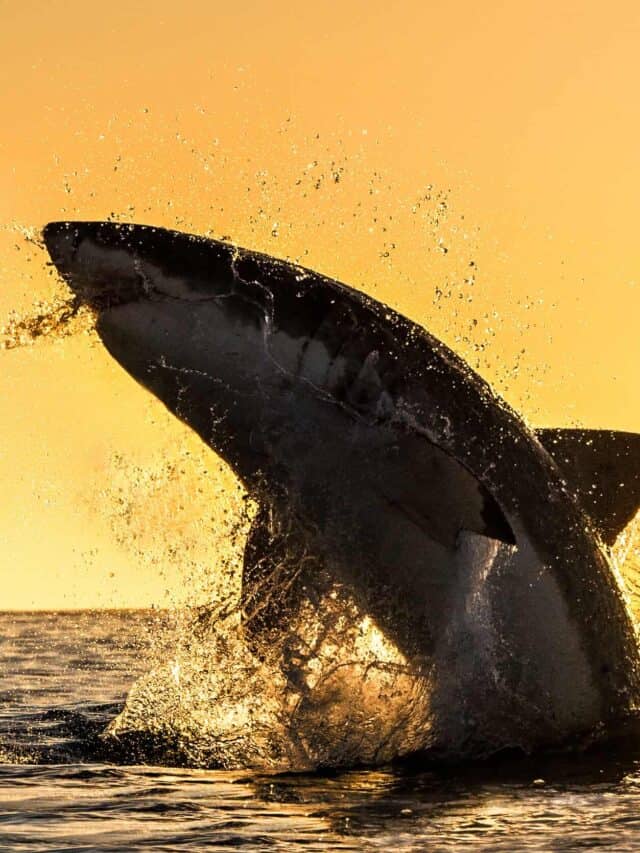
Great White Sharks are most commonly seen in coastal waters along North America, South Africa, Australia, and South America.
©iStock.com/USO
Great White Sharks (Carcharodon carcharias) are found in temperate waters all over the world, but they are most commonly seen in coastal waters along North America, South Africa, Australia, and South America. They are known to occur in the Atlantic and Pacific Oceans, as well as in the Mediterranean Sea.
Great White Sharks are highly migratory and are known to undertake long-distance movements in search of food and mating opportunities. They are typically found in waters that are between 54°F (12°C) and 75°F (24°C), and they are able to tolerate a wide range of water temperatures and salinity levels.
Great White Sharks are apex predators and play a critical role in maintaining the balance of marine ecosystems. They are also of great interest to scientists, who are studying their behavior, biology, and migration patterns in order to better understand and conserve this magnificent species.
What Is The Lifespan Of A Great White Shark?
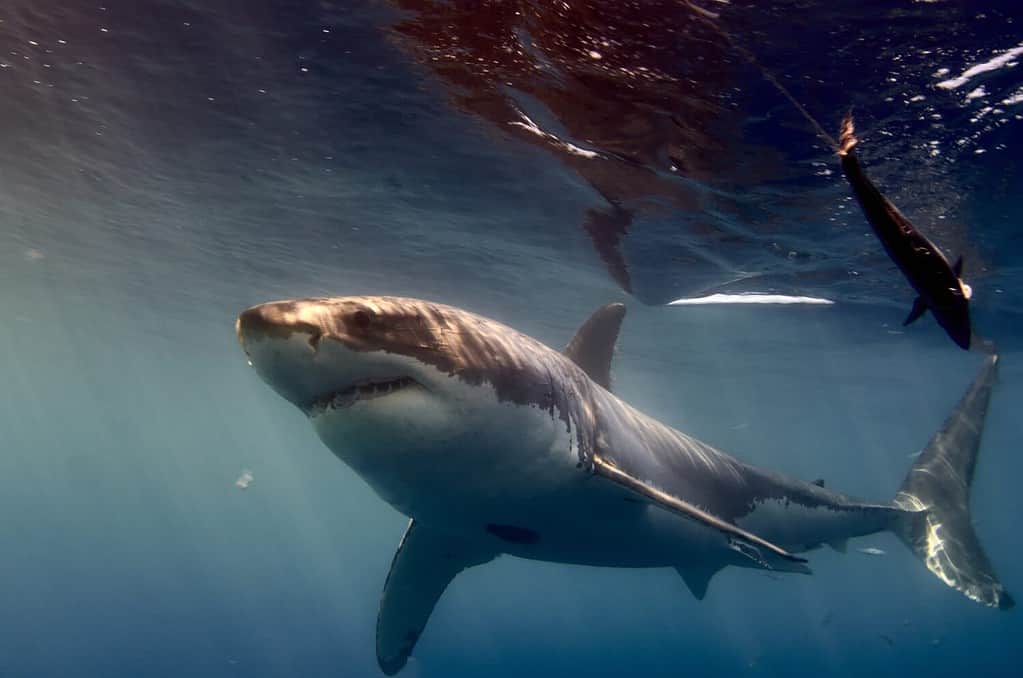
Several factors can influence the lifespan of a Great White Shark, including genetics, diet, and environmental conditions.
©Wirestock Creators/Shutterstock.com
The lifespan of a Great White Shark (Carcharodon carcharias) is estimated to be between 30 and 70 years. However, this range is highly variable and is based on limited data, as these large and elusive predators are difficult to study in the wild.
Several factors can influence the lifespan of a Great White Shark, including genetics, diet, and environmental conditions. For example, Great White Sharks that live in colder waters tend to have longer lifespans than those in warmer waters, likely due to the fact that colder temperatures slow down the rate of metabolic processes and reduce the rate of aging.
Despite their longevity, Great White Sharks face numerous threats in the wild, including overfishing, habitat loss, and bycatch in commercial fishing gear. These threats, along with a low reproductive rate and a late age of maturity, make Great White Sharks vulnerable to population declines and extinction.
As a result, conservation efforts are underway to protect these magnificent predators and ensure their continued survival in the world’s oceans.
Thank you for reading! Have some feedback for us? Contact the AZ Animals editorial team.






